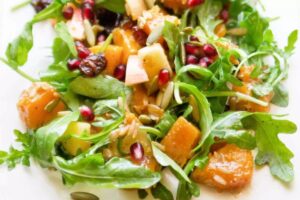
Welcome to our comprehensive guide on the pros and cons of cast iron cookware! Whether you’re a seasoned chef or an amateur home cook, you’ve likely heard about the wonders of cooking with cast iron. This versatile and classic material has been used for generations, and its popularity continues to soar.
In this article, we’ll dive deep into the world of cast iron cookware, discussing its advantages and disadvantages, as well as tips for care and maintenance. So, let’s roll up our sleeves and get cooking!
Pros and Cons of Cast Iron Cookware
Cast iron cookware has its fair share of pros and cons. Let’s explore them in detail:
Pros
- Superior Heat Retention: Cast iron’s ability to retain heat is unparalleled. Once it’s heated, it stays hot, ensuring even cooking and perfect sears.
- Durable and Long-Lasting: Investing in a quality cast iron piece can last a lifetime or more with proper care, making it a cherished heirloom.
- Versatile Cooking Options: From stovetop to oven, campfires to grills, cast iron cookware can handle it all, making it incredibly versatile.
- Natural Non-Stick Surface: With regular seasoning, cast iron develops a natural non-stick surface, reducing the need for excessive oil or butter.
- Adds Dietary Iron: Cooking with cast iron can enrich your food with small amounts of iron, which is beneficial, especially for those with iron deficiencies.
- Enhances Flavor: Over time, cast iron develops a patina that enhances the flavors of your dishes, adding a unique touch to your culinary creations.
Cons
- Heavy and Bulky: Cast iron cookware is notoriously heavy, which can be a drawback for some, especially when dealing with large pieces.
- Requires Seasoning and Maintenance: Cast iron needs regular seasoning and proper care to maintain its non-stick properties and prevent rust.
- Not Dishwasher Safe: Avoid using the dishwasher for cleaning cast iron cookware, as it can strip away the seasoning and promote rusting.
- Slow to Heat Up: Cast iron takes longer to heat up compared to other materials, requiring preheating before cooking.
- Reactivity to Acidic Foods: Acidic ingredients can react with the iron, potentially altering the taste of the food and causing leaching of iron into the dish.
- Initial Cost: Quality cast iron cookware can be relatively expensive upfront, although its longevity justifies the investment.
Choosing the Right Cast Iron Cookware
When selecting cast iron cookware, consider the following factors:
1. Size and Weight
Determine the ideal size and weight of the cookware that suits your needs. Remember that larger pieces might be challenging to handle, especially when filled with food.
2. Pre-Seasoned vs. Unseasoned
Some cast iron cookware comes pre-seasoned, while others require seasoning before use. Decide which option aligns with your preferences and cooking habits.
3. Handle Design
Check the design of the handles to ensure they provide a secure and comfortable grip, as lifting heavy cast iron requires a sturdy hold.
4. Thickness
Thicker cast iron distributes heat more evenly, leading to better cooking results. However, it also means a heavier piece.
5. Lid Type
Consider whether you need a cast iron piece with a lid. Lidded cookware is excellent for slow cooking and trapping moisture.
FAQs (Frequently Asked Questions)
1. Can I use soap to clean my cast iron cookware?
Yes, you can use soap to clean your cast iron cookware. Contrary to popular belief, using soap won’t strip away the seasoning. However, it’s best to avoid harsh detergents and scrubbing pads that might damage the seasoned surface.
2. How do I season my cast iron cookware?
To season your cast iron cookware, coat it with a thin layer of vegetable oil or melted shortening. Place it in an oven preheated to 350°F (175°C) for about an hour. Let it cool in the oven before wiping away any excess oil.
3. Can I use cast iron on a glass-top stove?
Yes, you can use cast iron on a glass-top stove, but with some precautions. Lift the cookware rather than sliding it, as the rough surface of cast iron can scratch the glass. Also, avoid dropping or banging it on the glass surface.
4. Why is my food sticking to the cast iron?
Food might stick to the cast iron if it’s not adequately seasoned, or if it’s cooked at the wrong temperature. Make sure your cookware is well-seasoned and preheated before cooking to prevent sticking.
5. Can acidic foods damage cast iron cookware?
Yes, acidic foods can cause damage to cast iron by breaking down the seasoning. Limit cooking acidic dishes in cast iron or ensure it has a well-established seasoning layer.
6. How do I remove rust from cast iron?
To remove rust, scrub the affected area with a mixture of salt and vegetable oil using a soft brush or cloth. Rinse and dry thoroughly, then re-season the cookware.
Conclusion
Cast iron cookware undoubtedly has its advantages and drawbacks, but for many, the benefits far outweigh the inconveniences. Its ability to retain heat, create natural non-stick surfaces, and add a unique flavor to dishes make it a beloved choice for cooking enthusiasts worldwide.
Remember, investing in quality cast iron cookware and giving it proper care will ensure its longevity and enhance your culinary experience for years to come.
A cast iron pan is a well-known piece of cookware for the kitchen. Like all other materials, there are strengths and weaknesses to it as well as its flaws. Continue reading for details on the pros and cons of cast iron cookware.
When looking for the best cast iron cookware set, you should first consider the quality of the cookware itself. You need to find a set that is made from the best quality metal such as Cast Iron or Stainless Steel. Unless the manufacturer screws things up, all cast iron cookware is still just as good as any other, with maybe a few minor differences and extra features being the sole difference.
Pros and Cons of Cast Iron Cookware – Why Cook With Cast Iron
Pros of Cast Iron Cookware
Cast iron pots aren’t costly
In a day and age when it’s simple to splash thousands of dollars for a kitchen knife or perhaps even thousands (!!) on fancy sets of pans, it’s nice to have the option of purchasing a cast iron pan that is solid for under thirty dollars. Remember what we said about cast iron becoming better with time? Bonus points when you get bargains on an old, second-hand pan.
Cast iron cookware is robust
In all likelihood that your cookware made of cast iron can last for a longer time than yours will. No joke. The old pan I got that my grandma used to cook in is our absolute favorite. Why? Because cast iron gets better as it ages. Although they can’t completely produce them the way they did in the past cast iron pans weigh a lot, and are nearly bulletproof kitchen items that’ll last for decades.
The cast iron cookware offers non-stick cooking without substances
When properly seasoned and taken care of the cast iron skillet will create a layer of coating that prevents most food items from sticking. You can cook eggs on the surface of a cast iron pan that is seasoned!
Cast iron is an ideal alternative to chemically-rich non-stick finishes. Before you start screaming at your rooftops…we’re going to tell it to you in plain English: properly seasoned cast iron can get very close to a pan that is non-stick however it’s not going to make it much more non-stick than chemicals like Teflon.
Teflon is a synthetic resin designed to be an anti-stick coating. It’s not more non-stick than Teflon but well-seasoned cast iron is typically non-stick enough to replace it in most cases.
Pans made of cast iron hold heat effectively
Compared to other available materials, cast iron is among the most effective when it comes to holding heat. Some metals, such as aluminum can experience a substantial temperature drop after adding food items into the pan. However, this is not the case with cast iron. Once heated, it’ll remain at an essentially constant temperature even after dropping an item that is colder into it.
What’s the significance of this?
A pan that is kept warm will create a crisp, dark crust. This is especially true for the stovetop (searing things such as meat, tofu) as well as when baking in an oven. If you cook the cast iron pan in the oven and add a fresh pizza to the top, it will develop the sought-after crispy crust without the need for a pizza stone. Simply put, Cast iron is the best choice for a perfect caramelized golden crust on food. Seriously, who wouldn’t like to have that?
Benefits of cast iron cookware:
- It is true that seasoned cast iron cookware is much easier to clean than stainless steel.
- Cast iron is extremely thermal density. It stays hot longer.
- Cooking with cast iron is a great way to naturally include iron in your meals.
- Long-lasting. Ironware used by some families has been in use for more than 100 years.
- More affordable than enameled cast Iron and stainless steel cookware that is of the highest quality.
- Cast iron is tough and unlikely to break.
Cons of Cast Iron Cookware
The cast iron cookware is heavy
These pans aren’t light. The majority of cast iron pans are heavy, which makes them a bit difficult to move. It takes at least two people to carry them into and out of the oven. Also, due to their weight and size, it is recommended that you have a sink that is large enough to clean the pan. Take this into consideration when you decide about the dimensions of the pan.
What to do to deal with this:
While it can be tempting to purchase the biggest pan, you should choose one that is large enough to handle your daily cooking and yet easy enough to handle that you’ll need it often. Check out the pans at the market and decide which one you’re happy with. Keep in mind that this is the minimum weight of the pan It’ll get heavier when you fill it with food!
The cast iron cookware makes not good conductors of heat.
Without getting too geeky here… a cast iron can be useful at Retention (keeping) heat however it’s not quite as good as Conducting (transmitting) heat. Cast iron pans radiate heat differently when you’re using a stove that is significantly larger than the size of the pan. In this situation, the portion of the pan which is directly above the burner will become hotter in comparison to the outer edges (which are further concerning the burning source).
What can you do? To prevent uneven heating make sure you use a stovetop that is as close in size and size to your pan as is possible. Give the pan sufficient time to warm up properly. Alternately, letting an iron pan get warm by baking is a different method to ensure that the heating is evenly distributed.
Cookware made of cast iron need the seasoning process
To allow your cast iron pan to become non-stick, it is necessary to aid in the development of the coating of seasoning. Even though many cast irons are sold “pre-seasoned” however, we’ve found that the seasoning provided by the manufacturer requires some more energy to reach the “non-stick” standard you’d like to see.
If you’re familiar with how to prepare and how to do it, you can make enough seasoning before you begin cooking things like eggs in it. When you’re still trying to build an adequate base of seasoning, your pan is more susceptible to rust and interacts with acidic foods (like lemon juice and tomatoes).
Acidity can impede the seasonings you’re trying to develop and can also cause a metallic taste in the food you prepare. However, once a decent amount of seasoning is set up, you don’t have to fret about acidic foods that are cooking in your pan. However, in the meantime, the best thing to do is to be cautious about it.
The handles of iron cookware can be extremely hot
Since the cast iron pans were created out of a single piece of metal and the handle is eventually extremely hot. This is particularly true if the pan was heated inside the oven. The handle can be grabbed by hand during a brief lapse in judgment – could result in burning pain. Ouch.
What do you do:
Always exercise diligence when handling the cast iron pan (or any other pan to be precise). We employ oven gloves to remove the pan of the oven. Then, after we’ve finished cooking, we’ll place an old dish towel over the handle to serve as an emotional reminder that the pan is still warm. It’s possible to purchase the cast steel pan cover however, we’ve not leaped.
Cook’s Illustrated did an in-depth review of this and the conclusion is that the most successful alternative should be used in the same way as a holder for the pot. That is you can place it over the moment you’re ready to take the hot pan away from your stove. However, do not leave it on when baking or cooking. As we usually require two hands to lift the oven from the pan in our case this method will at best serve as a replacement for the other (of two) oven gloves.
Disadvantages of cast iron cookware:
- The handle is hot.
- Cast iron is heavier than other cooking tools.
- Bare cast iron isn’t the best choice for boiling water or cooking foods that are acidic.
- Cast iron cookware requires to be re-seasoned.
- Cast iron pans can take longer to warm up.
- It’s more durable than tiled kitchen floors and toes. Ouch, don’t drop it.
Cast Iron Pros and Cons
- The best cast iron cookware will have high heat retention properties for foods such as meats and vegetables. If you are looking for a set to cook your favorite meals, it is advisable to look at those that have high heat retention properties. These will retain their heat for a longer period, thus cooking your foods quicker and better. To get the best out of your cooking, try to get a set that has non-stick properties.
- Non-stick cookware may still require some vigilance when it comes to cleaning. However, if you have the best cast iron cookware, you should not have a hard time taking care of it. With just a little bit of gentle effort on your part, you can always enjoy hours of uninterrupted use. Most non-stick pans come with a special coating that will prevent the food from sticking to the pan, making cleanup a lot easier than it used to be before.
- For the best cast iron cookware, you may also want to consider getting a dutch oven. You can get a durable and versatile piece of kitchenware in a Dutch oven that is also very easy to clean. However, some other non-stick pans may still need some attention when it comes to cleaning.
- When it comes to choosing the best cast iron cookware, one important consideration is heat distribution. Some pans have bigger heat distribution which can cause uneven cooking. When cooking on a stovetop, make sure that the middle of the oven or the surface of the pan has enough heat for the food that you’re cooking. On the other hand, enameled cast iron signature pieces have better heat distribution. So pay close attention to how evenly the heat is distributed on the oven or the stovetop.
Final Verdict
There are many pros and cons associated with all types of cookware. If you want to know more about them, you can check out the best cast iron cookware reviews. If you are very choosy about what type of pan you would like, you can also read some of the pros and cons associated with different types. In any case, these pans are very beneficial in terms of price, appearance, and functionality.






